Note: This Virtual Geocache Requires A Boat For Completion
Doctor Harold Crane has been my dentist for about as long as I’ve had teeth. He’s seen me through everything from check-ups to cavities and has always fascinated me with stories about the history of everyday things. How everything from the house his practice is based in to the bridge he crosses to get there each morning has a tale to tell. He was always fond of waterways and bridges but that’s to be expected of someone who fills his days with root canals and bridgework! What I humbly present here are just a few of the things I have picked up from him throughout the years. This cache will require just three things: a boat for a lovely three-mile-round-trip paddle, a sharp eye to gaze upon the idyllic scenery studded with memorials including the Lincoln Memorial and the Washington Monument, and a keen ear to listen for the stories the bridges you pass have to tell.
The Aqueduct Bridge
The Aqueduct Bridge was a bridge built before the Civil War over the mighty Potomac River with the primary objective of transporting boats. Not cars. Not people. Not mules. Mainly boats. Over a river. The bridge, designed by Major William Turnbull, was built in 1843 to connect two nearby canals, the Chesapeake and Ohio Canal (the famous C&O Canal) in D.C. and the Alexandria Canal in Virginia. Thirty feet off the ground it was a sight to see when it stood over a century ago as boats soared above the river. While the bridge was mainly used for boats, there was admittedly a narrow road alongside it for carriages and later on a separate level was added for pedestrians. During the Civil War the aqueduct was drained so troops could march across it. Sadly it was never refilled after the war as the wood had decayed. Instead in 1868 the existing piers were used to support trusses and a wooden floor to create a highway for carriage and pedestrian use.
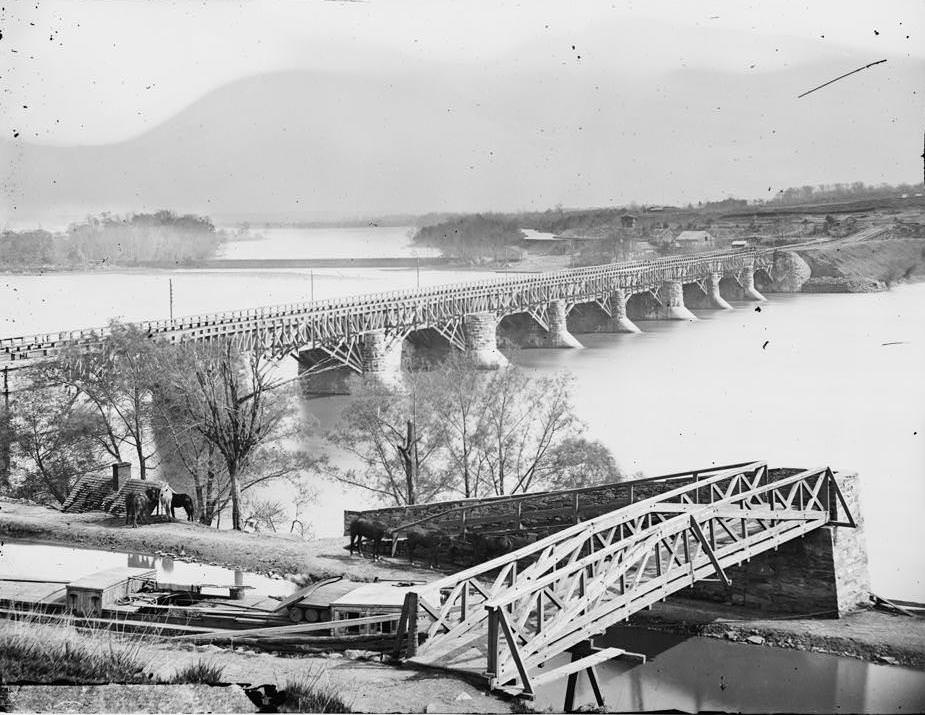
The highway bridge was only open for a few scant years before the D.C. government purchased it and closed it after a study done by the D.C. engineers found that the wooden bridge was too hazardous to use. After much squabbling between shareholders and the government, the bridge was fixed and reopened in 1889. After the construction of the Key Bridge, the Aqueduct Bridge was closed and the superstructure was removed in 1933 leaving behind its former piers in the water. Several civilians argued for the removal of the piers as they were hazardous to boaters but Army Engineers refused to remove them due to the cost. Eventually in 1962, both groups agreed that seven of the eight piers would be removed with the lone pier remaining as a historical marker.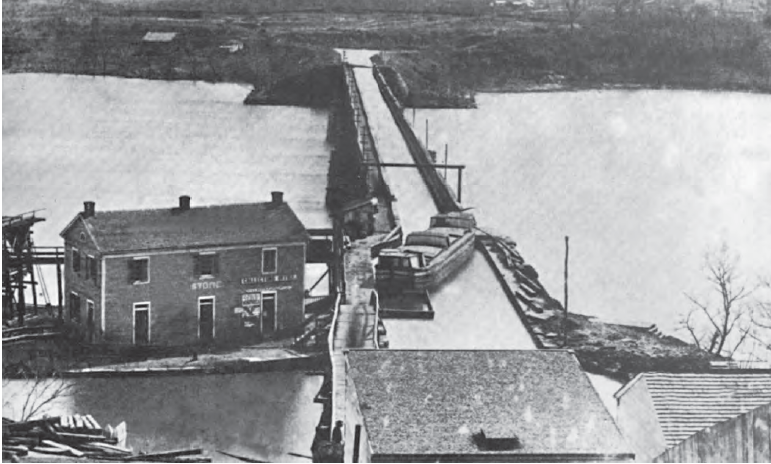
1) As you begin your paddle, you will quickly see an old pier from the Aqueduct bridge in the water. Paddle to the west side of it (the side facing the Three Sisters islands) and draw a picture of the arrangement of the bricks.
Francis Scott Key Bridge
The Key Bridge is Washington's oldest surviving road bridge across the Potomac, replacing the Aqueduct Bridge. It features an open-spandrel design made of reinforced concrete and steel with streetlights and multi-directional lanes of traffic studding its 1701-foot length. Alongside it, remnants of the Aqueduct bridge including the abutments on each side of the river and a small pier can still be seen and explored today. Due to the growing demand of the Aqueduct bridge and the costly repairs it required President Woodrow Wilson signed a $1.175 million bill (a little over $28 million at today’s value) allowing for the construction of the a new bridge in in May of 1916. Two chief builders, Nathan C. Wyeth, a private local architect, and Major Max C. Tyler, an engineer in the Army Corps were chosen to design the bridge.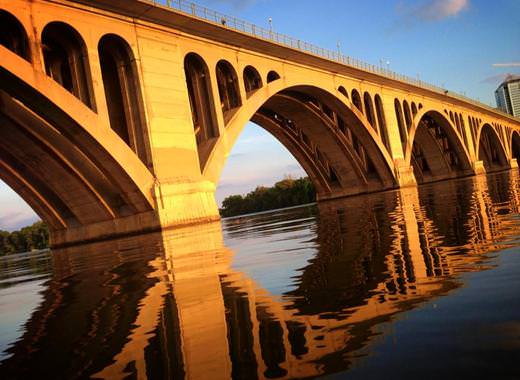
The bridge was initially designed to be a double-decker leading into D.C. but with World War I breaking out in Europe, the plan was modified due to cost. Due to the main labor force being out at war and other political setbacks, the construction on the bridge got pushed off until March of 1917 when excavation began for the abutments. As all great construction projects go, the project eventually ran out of money before it was completed but Tyler requested and won an additional $1.1 million in 1920 to finish the bridge. After three more long years, the bridge was finished in January of 1923 and dedicated to Francis Scott Key, the writer of the Star-Spangled Banner whose home was just west of north terminus of the bridge.
Over the years, the bridge was altered several times: in 1939 to accommodate the extended George Washington Memorial Parkway, in 1955 to widen the roadway, in 1987 to replace the roadway with new bonded post-tensioned concrete, and in 2014 to combat corrosion on the underside of the deck. Today the bridge is one of several bridges connecting Virginia to D.C. and arguably the most used each day.
2) Look around at the plethora of boathouses and flotillas as you paddle up underneath the bridge. Count how many green and red lights there are on both sides of the bridge.
The Theodore Roosevelt Bridge
The Theodore Roosevelt Bridge, not to be confused with the Theodore Roosevelt Memorial Bridge of Troy, Montana, has connected Virginia to Washington, DC since 1964. The bridge runs over Theodore Roosevelt Island, an eighty-eight-and-a-half-acre island in the Potomac that features over two and a half miles of trails. Along the top of the bridge, Interstate 66 and U.S. Route 50 are used by thousands of commuters and itinerant folk each day. 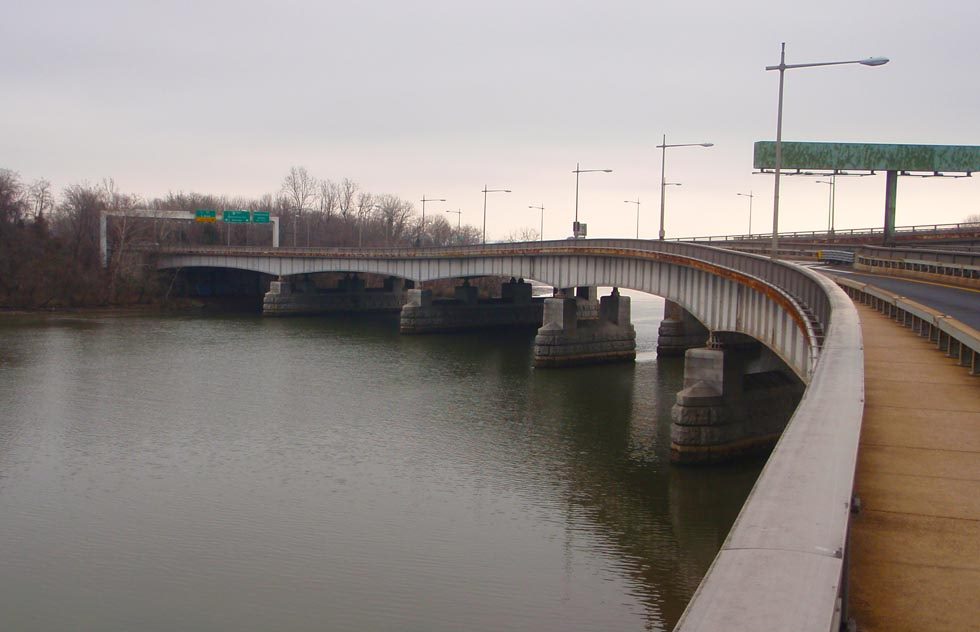
Originally the bridge was proposed in 1952 as an additional way into The District but plans were suspended due to opposition from the Theodore Roosevelt Memorial Association, the group who owned the island at the time. Several years of back and forth between the Association and Congress passed but eventually an agreement was struck allowing the use of the southern end of the island for the bridge. Under Dwight Eisenhower, legislation authorizing the construction of the bridge was signed in June of 1958 with construction beginning in 1960 and the bridge being opened to the public on June 23rd of 1964.
3) Close your eyes and listen to the hum of traffic traveling across the bridge as you approach the now 54-year-old bridge. When you arrive, count how many metal sections there are between each abutment of the bridge.
Arlington Memorial Bridge
The Arlington Memorial Bridge crosses the Potomac river from Arlington, Virginia to Washington D.C. and may be the most contentious bridge of the lot. It was proposed in 1886 but, like many things in D.C., fell victim to political quarrels as many wondered whether a bridge should be considered a memorial. It went through several designs and redesigns, several names and renames (some of which include the “Lincoln-Grant Memorial Bridge” and the “General Ulysses S. Grant Memorial Bridge”) but as the bridge was designed as a memorial to Ulysses S. Grant and Robert E. Lee, Congress refused to fund it each time it was proposed.
Eventually, Congress authorized a survey of the area by the US Corps of Engineers and, once it was complete, started having some fun. Congress gave the Secretary of War $5000 (about $147,000 in today’s value) to sponsor a competition to design the bridge. Several prominent designers of the time were invited to submit designs including George Morrison, Leffert Buck, William Hutton, and William Burr with Burr’s design being the winner. The design was for a drawbridge with 36 arches of steel and stone and a tower over each end with statues adorning them. Despite the near done-deal of creating the bridge at the turn of the century, Senator George Hoar blocked the building because he did not like the design. Several months passed in 1900 and after further pushing for a bridge to be built, a new bridge was designed by George Keller. The design fell by the wayside for over 20 years as D.C. worked on implementing pieces of the McMillan Plan (a plan to develop the area that is now the national mall).
In 1921, as Warren Harding was traveling to the original dedication ceremony for the Tomb of the Unknown Soldier he got caught in a three-hour traffic jam because the bridge near the cemetary did not have the capacity for the occasion. Now, if a president gets delayed for something and has all that time to stew there’s definitely going to be some sort of recourse. Harding appropriated $25,000 in 1922 to fund the bridge but the Commission of Fine Arts (CFA) opposed the bridge as they did not like the planned site near New York Avenue. Harding did not like this one bit and held a meeting with the vice president Calvin Coolidge and the CFA to iron out the details of getting the bridge built.
The CFA recommended 3 designers for the bridge and of them the firm of McKim, Mead, and White was selected to redesign the already three time designed bridge. Further disagreements arose after residents pressed to resolve whether the bridge would have a draw span. William Mitchell Kendall, an Architect with the firm, proposed a Neoclassical steel and stone arch bridge with a central bascule that was well received and approved, with minor changes, by the CFA in 1924. $12.5 million dollars in funding to start construction came after a lengthy legislative battle in the House and Senate and after six years of construction, the 2,163-foot bridge was built and opened in 1932. The bridge, which only ended up costing $7.25 million, had the longest and heaviest bascule span of any other bridge at that time. The draw span was only open for a few decades as it was permanently closed in 1961.
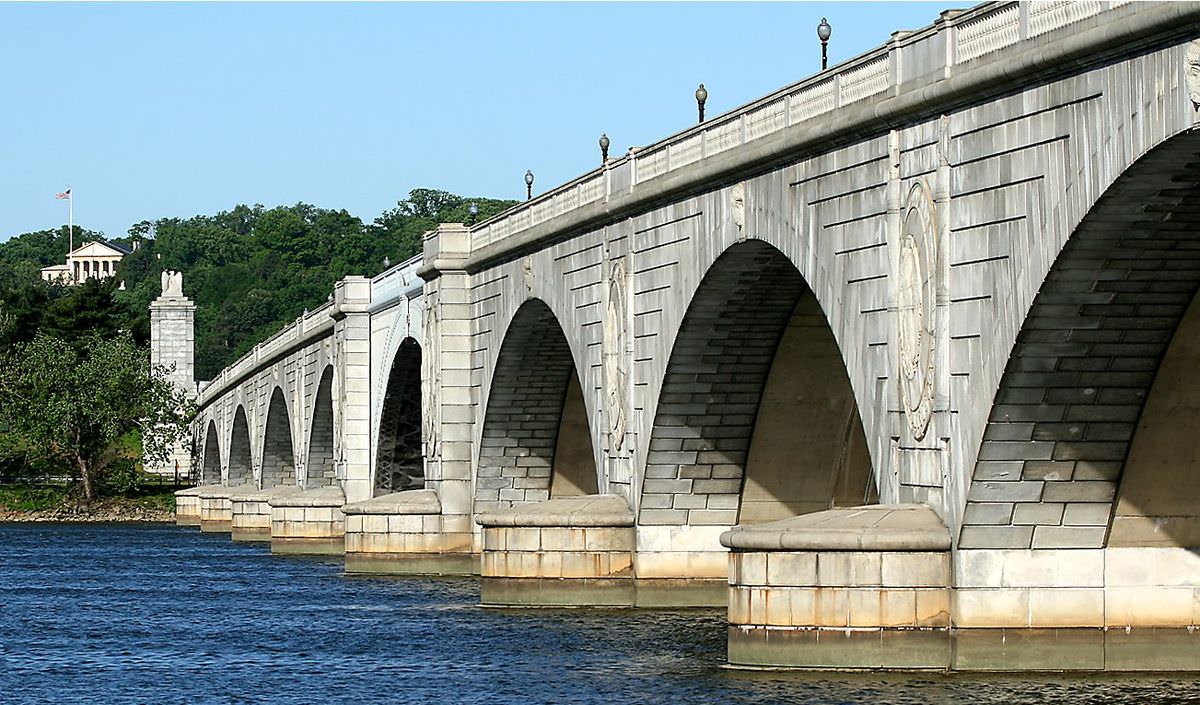
As the bridge doubles as a memorial, it is decorated with sculptures on its pylons and by each entrance. Leo Friedlander’s Sacrifice and Valor stand before each side and discs decorated with eagles and fasces are on each pylon. The bridge connects the Lincoln Memorial to the home of Robert E. Lee to physically and symbolically represent the reunification of the North and South. The bridge, mighty as it may be, has had several major renovations throughout the years with the most recent starting in November of 2017 with a projected completion of 18 months. Today the bridge defines the western end of the National Mall and is a landmark to all.
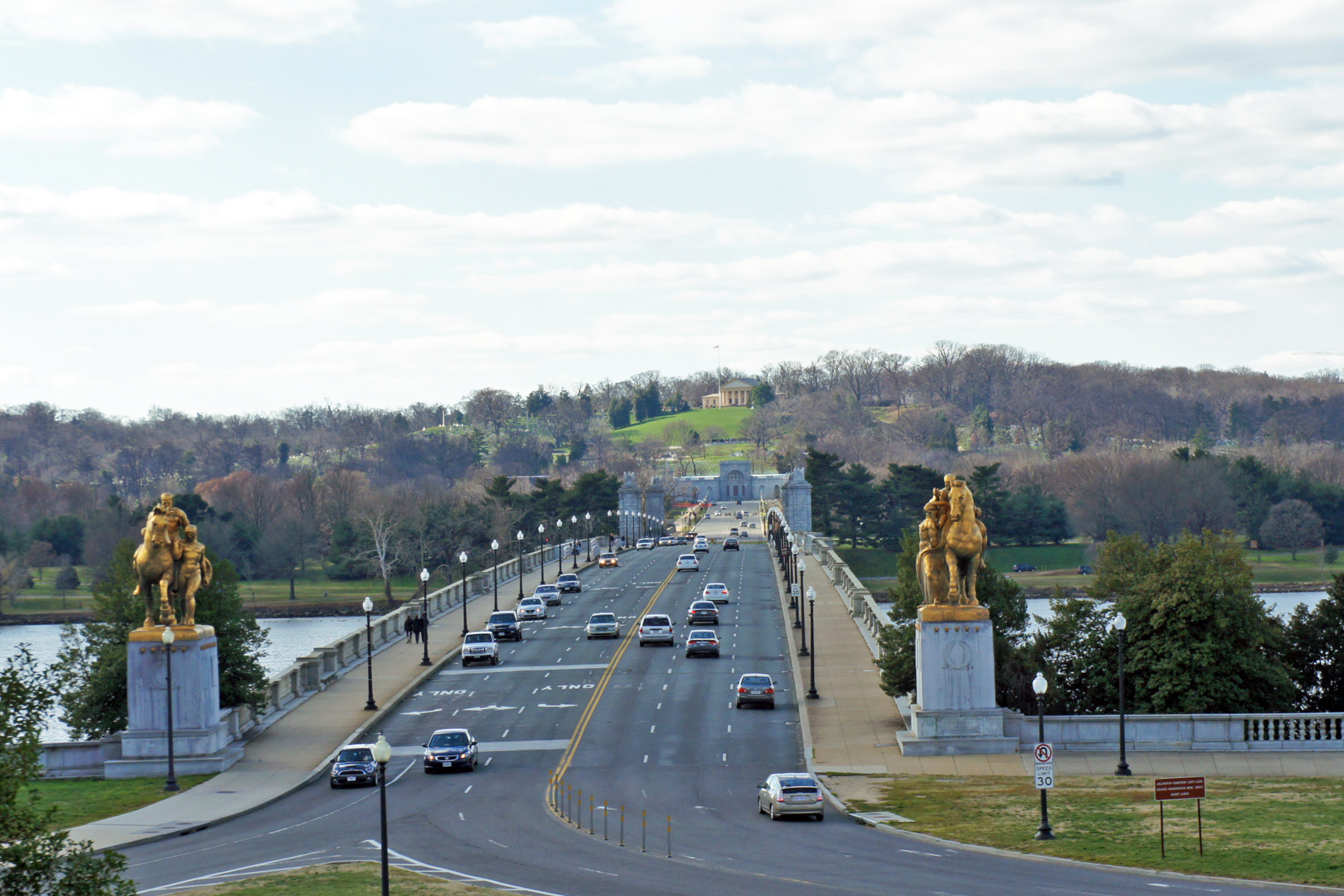
4) As you approach the last bridge of our Potomac paddle, take a moment and reflect. You have paddled about a mile and a half, or possibly even more, which in and of itself is a great accomplishment! You last task is to count how many green lights there are on the north-facing side of the bridge.
5) Take a photo of something interesting on the Potomac. Maybe one of the bridges or monuments!
Summary of Questions
1) Draw a picture of the bricks on the west side (the side pointed towards the three sister islands)
2) Count how many green and red lights there are on both sides of the bridge
3) Count how many metal sections there are between each abutment of the bridge
4) Count how many green lights there are on the north-facing side of the bridge
5) Take a photo of something interesting on the Potomac. Maybe one of the bridges or monuments
Virtual Reward - 2017/2018
This Virtual Cache is part of a limited release of Virtuals created between August 24, 2017 and August 24, 2018. Only 4,000 cache owners were given the opportunity to hide a Virtual Cache. Learn more about Virtual Rewards on the Geocaching Blog.